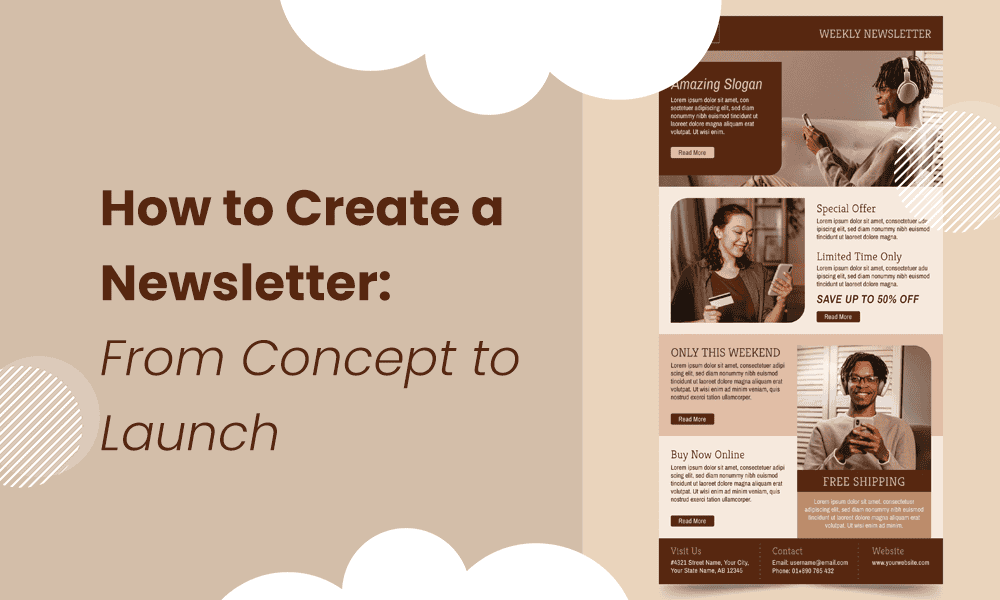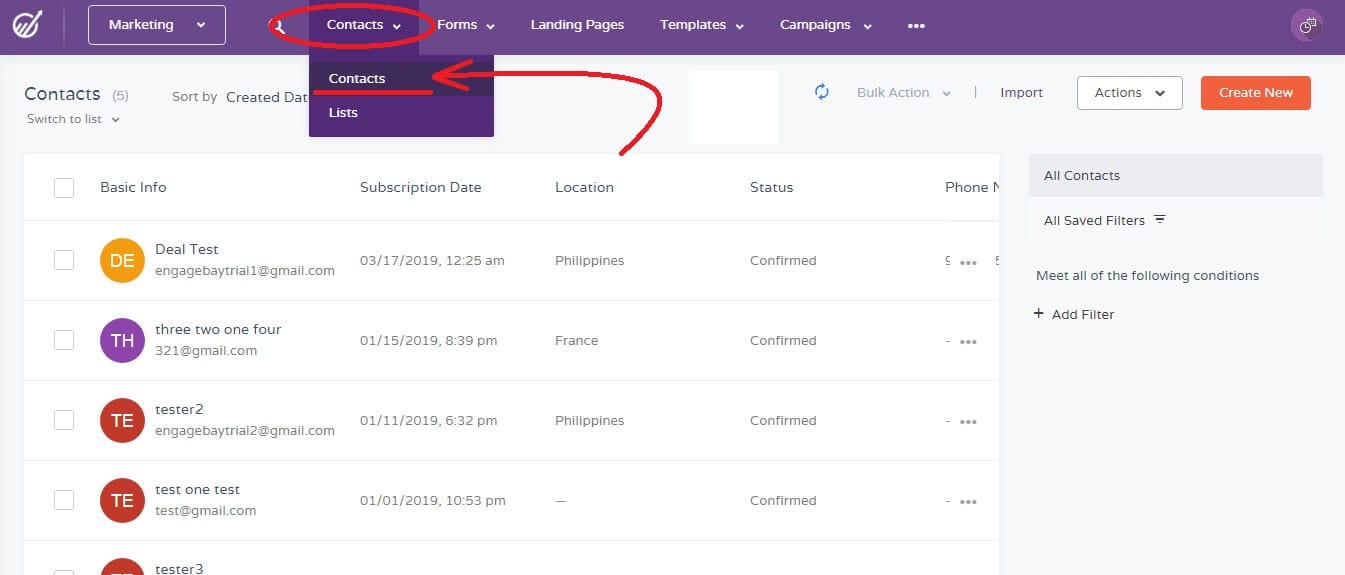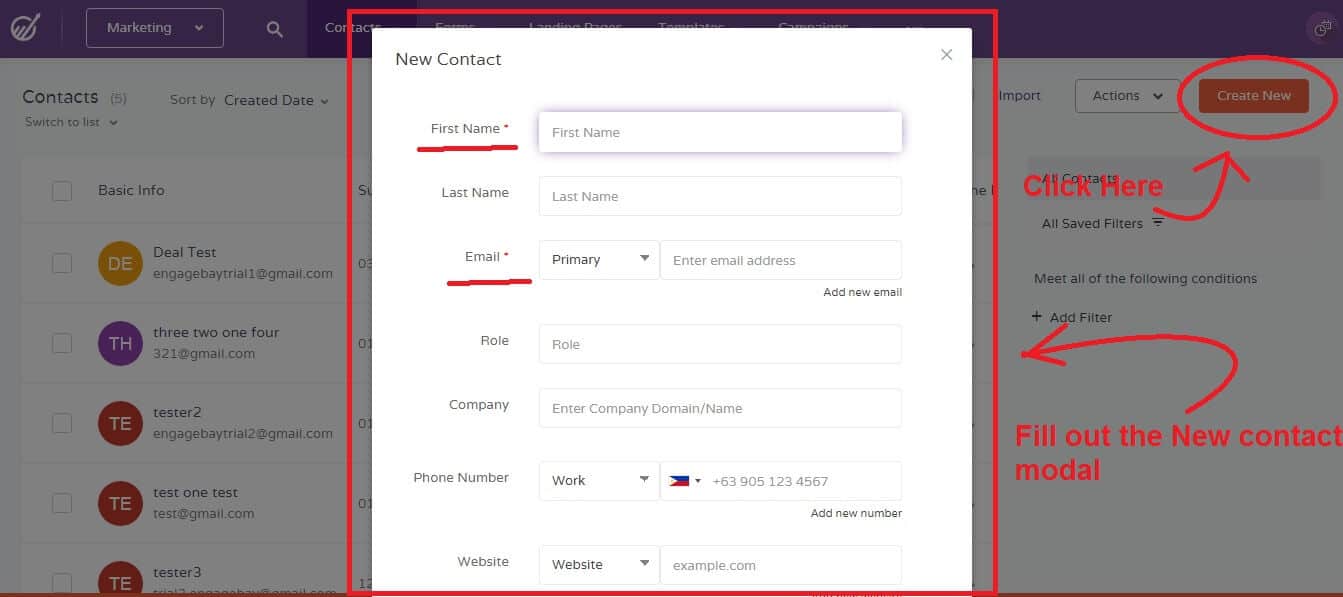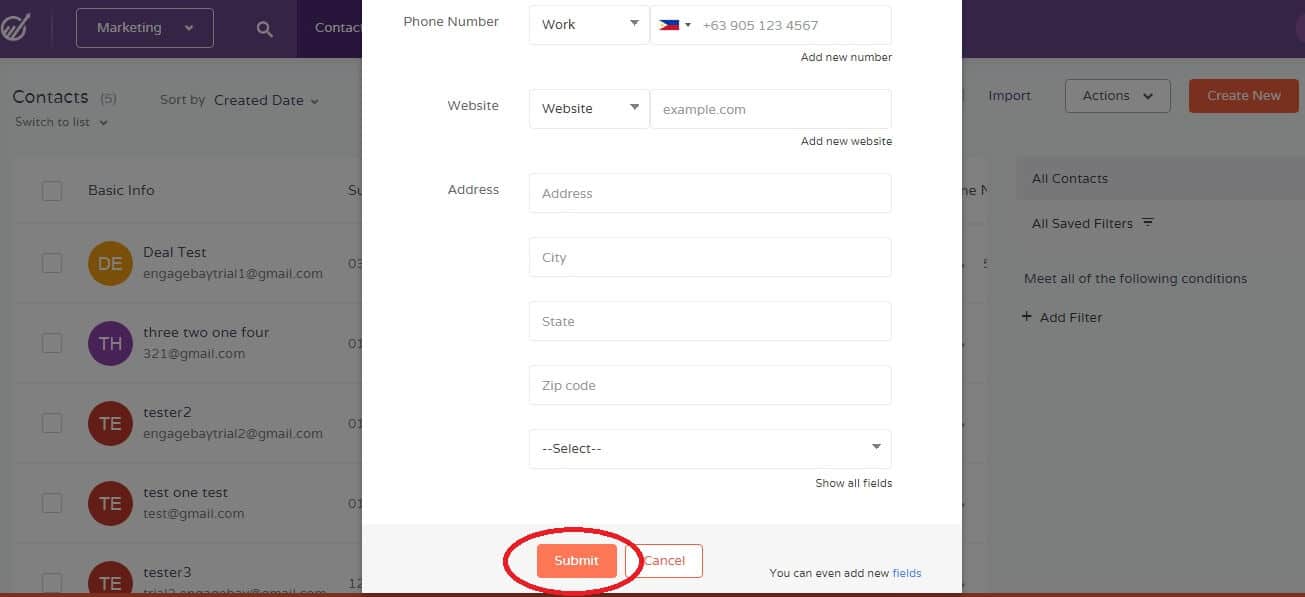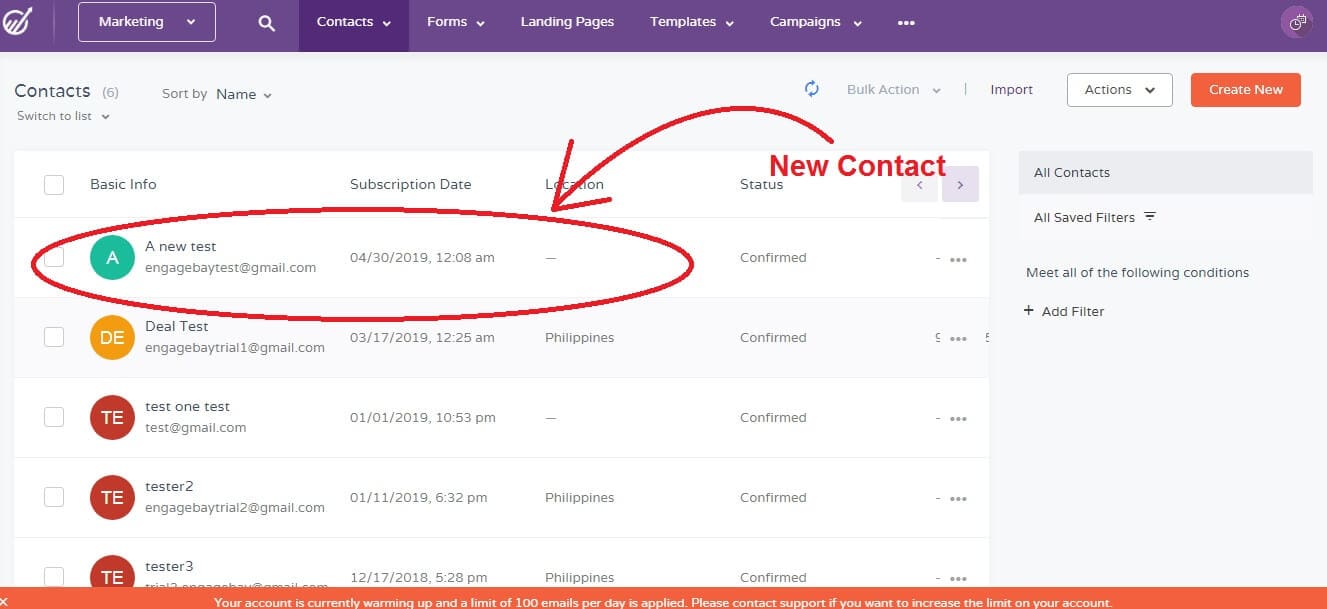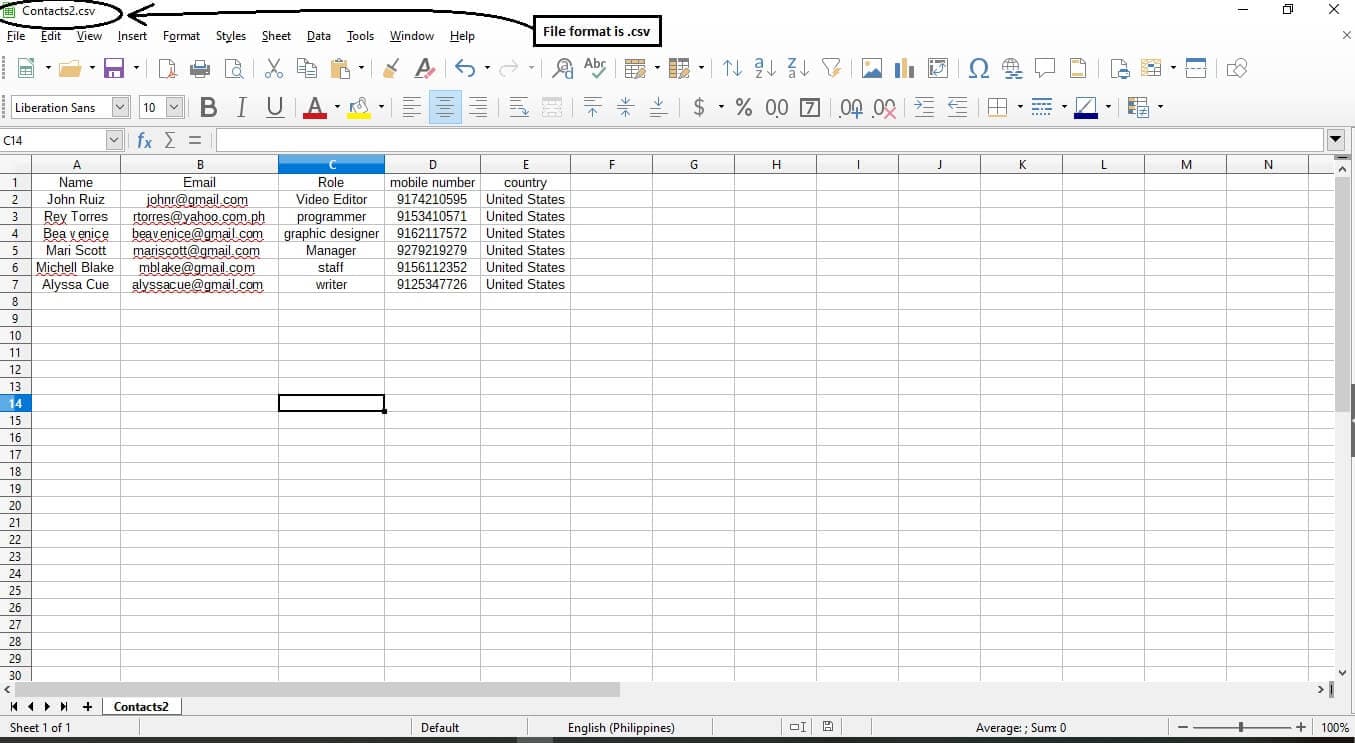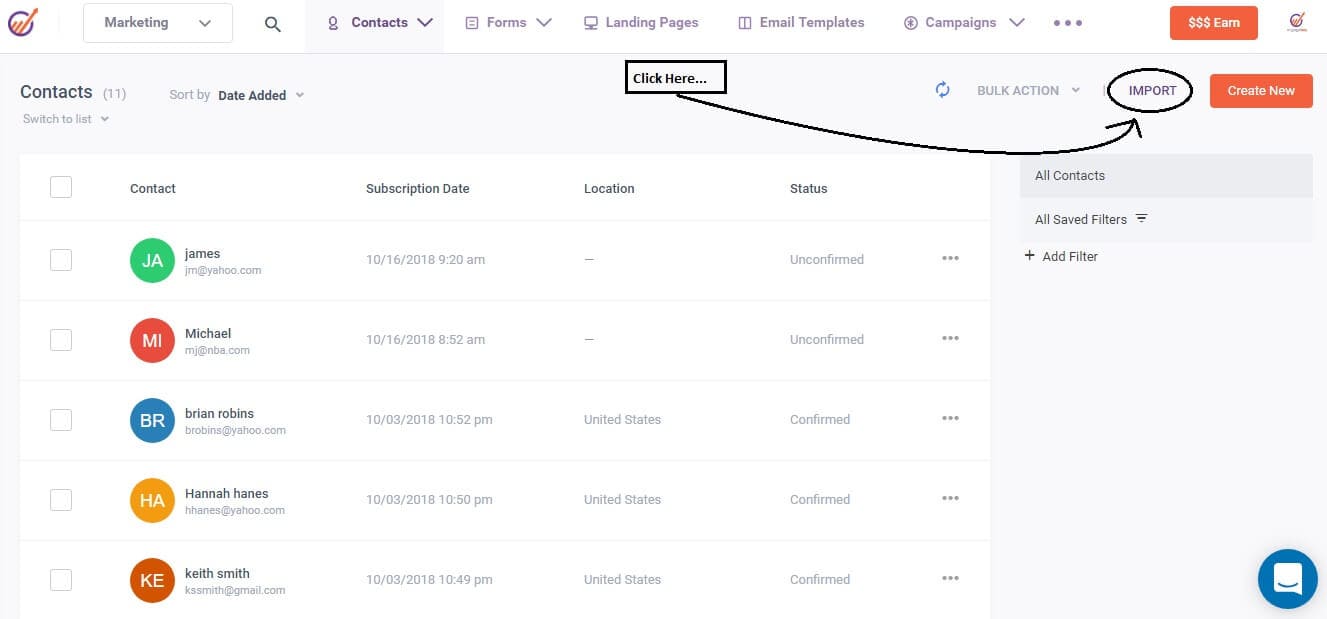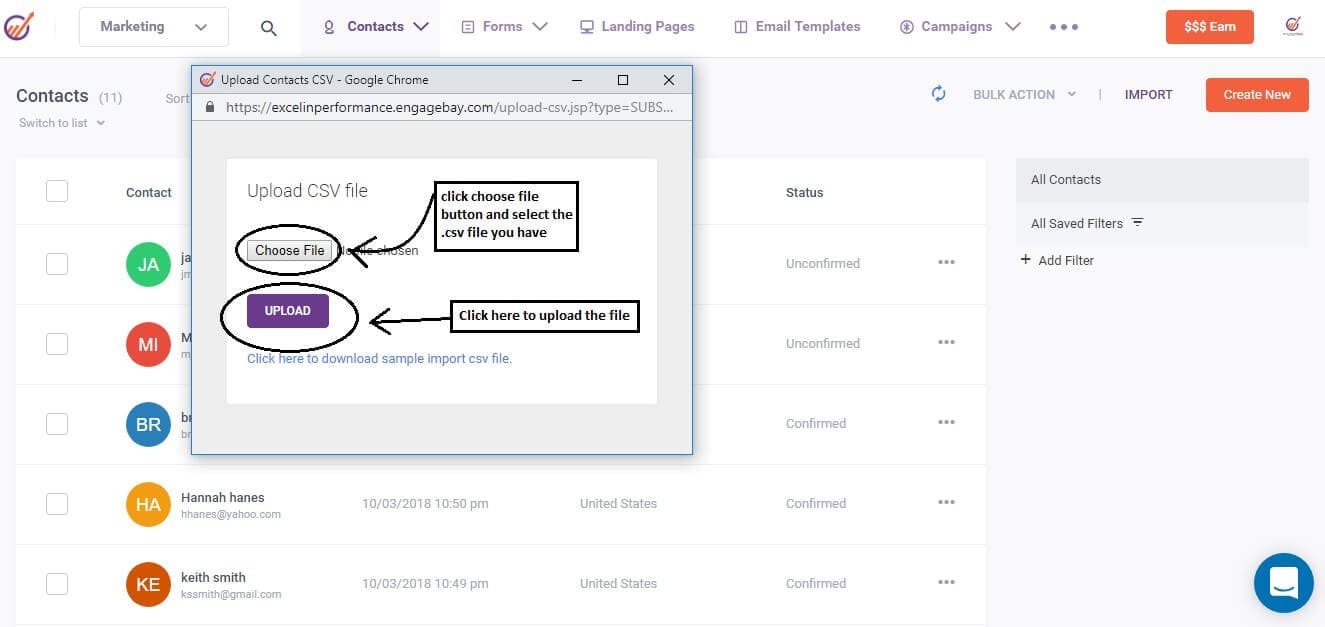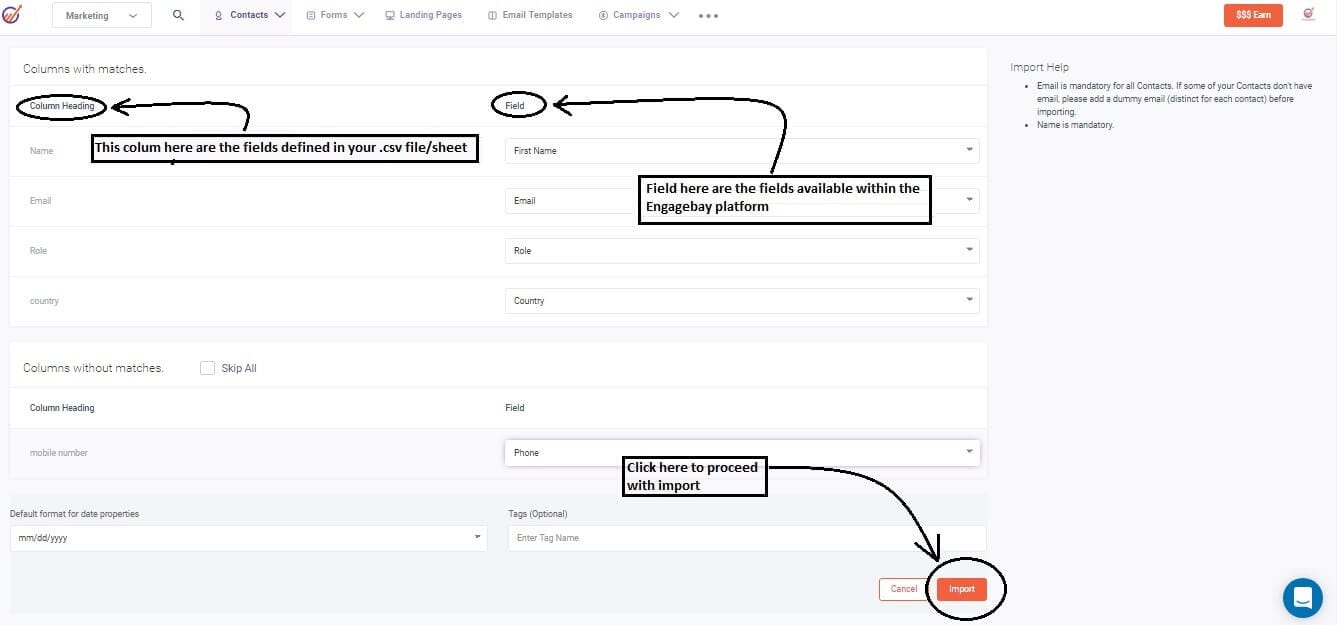Hola! News this week: When customers love a brand, they eventually subscribe to the newsletter. Most of them receive hundreds of newsletters every day (I get thousands, maybe ;p)
Newsletters are a great way to connect with your target audience, and it’s the reason behind publishers’ engagement success. Since 81% of small businesses’ primary acquisition channel is email, newsletters can be the golden egg in the basket. Companies can leverage this power tool to engage subscribers, get more leads, and convert them into paying customers.
This article will guide you on how to create a newsletter in eight easy steps:
- Choose your email marketing software
- Create a contact list
- Segment your subscribers’ list
- Craft your newsletter content
- Add personalization
- Nail your newsletter design
- Send your newsletter
- Keep an eye on the metrics
Read on for a detailed look at these steps.
Table of Contents
What Are Newsletters?
Newsletters are marketing emails that convey valuable information to engage subscribers beyond just transactions. Newsletters share valuable content that can contain promotional information, share blogs, articles, industry news and trends, holiday greetings, upcoming events details, company updates to keep your audience informed, and much more.
Here’s an example of an informative newsletter:
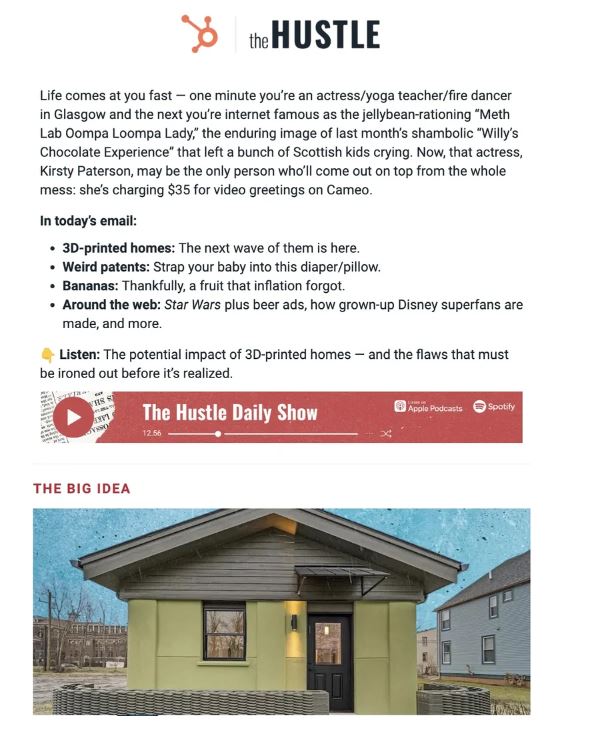
The Benefits of Newsletters
Newsletters are interesting; they contain exciting articles and topics, offers are tailored to specific audiences, and the design attracts attention. The insights derived from our study highlight that offers and sneak peeks further bumped up the open rates by a margin of 25 percent. In a similar case based on employing the same strategy for a retail client, there was an increase in click-through rate by 30% and sales from the newsletter subscribers by 20%.
~ Derrick Hathaway, Sales Director, VEM Medical
Research shows that 62% of customers prefer email as their main communication channel with small businesses. Therefore, newsletters, alongside social media platforms, offer a great way to stay in touch with customers and build relationships.
Here are the four biggest advantages of newsletters.
- Increase brand awareness: Sharing educative content with newsletters lets your business build a reputation and gain credibility among your newsletter subscribers.
- Drive more traffic to the website: When your newsletter content smoothly leads the reader to the call-to-action (CTA), they click on it to land on your website, adding to the website traffic.
- Encourage purchases: 50.7% of consumers admit purchasing through their emails at least once a month, and 59% agree that email newsletters impact purchase decisions.
- Unlock endless business growth: More website traffic eventually leads to more sales. This means email newsletters ultimately help your business grow.
Email marketing boasts an impressive return on investment (ROI) of generating $36 for every buck spent. By now, you’ve got more than one reason to care about email newsletters. So, ready to learn how to create a newsletter?
Let’s get started!
How To Create A Newsletter: A Step By Step Guide
Starting your own email newsletter is not difficult. If you know and understand your target audience, it will only take the following eight steps.
1. Choose your email marketing software
While you may use Gmail, Yahoo, and Outlook for your personal use, they’ll certainly not be enough to keep up with your email marketing strategy. Why? Such an email service provider (ESP) can’t ensure deliverability to numerous newsletter subscribers. They simply can’t offer that high level of authentication.
Will Yang, Head of Growth and Marketing of Instrumentl, and team automate their process using email marketing software for better efficiency.
It’s easy to start strong with an engaging, well-designed newsletter. But as the novelty wears off and other priorities pile up, the newsletter can become an afterthought. To overcome this, We automate as much of the process as possible using email marketing software. We plan out an editorial calendar months in advance, clearly defining roles and responsibilities. This frees up time to focus on creating truly valuable content tailored to our audience’s needs.
For this reason, we start our journey of how to create a newsletter by choosing an email marketing software that offers:
- A good deliverability rate
- Tools for designing newsletters and content for better engagement
- Management of other technicalities of email marketing
- Guidance on compliance with regulatory standards
- Analytics for tracking crucial metrics, such as open rates, click-through rates, and bounce rates
- Support from the team if you get stuck anywhere
EngageBay offers an easy-to-use email marketing platform with a drag-and-drop editor for creating newsletters. You can use tools like rich text formatting, advanced analytics, email automation, and much more. You can work with great designs from a wide collection of newsletter templates with a free account.
Sign up for EngageBay now and continue with the next steps to create a newsletter.
2. Build your email list
Once you’ve selected your email marketing platform, it’s time to build a list of contacts to send email newsletters. But how do you entice new subscribers to sign up? The answer is the email subscription form!
Save an easy-to-find sign-up space on your website to place a form with warm and inviting content to stay in touch with your brand. Here are some best practices for creating a signup form:
- Keep your subscription form easy by keeping the text short and asking for just the email address.
- Offer a value proposition to the subscriber’s email address in return. For example, your subscription pop-up may read, “Top industry news and updates delivered right to your inbox.”
- You may show off social proof if you’ve got any and leverage FOMO to get more subscriptions.
- Ensure your sign-up forms are mobile-friendly 82.2% of web traffic comes from mobile devices.
- A/B tests your email subscription forms with different variations to ensure all the elements work in your favor. Optimize as needed to put up the best variation on your business website.
- You can attract more new subscribers by offering sign-up incentives, like a certain amount of discounts.
Want a good example of an email subscription form? Take a look at the one below by Planet Organic:
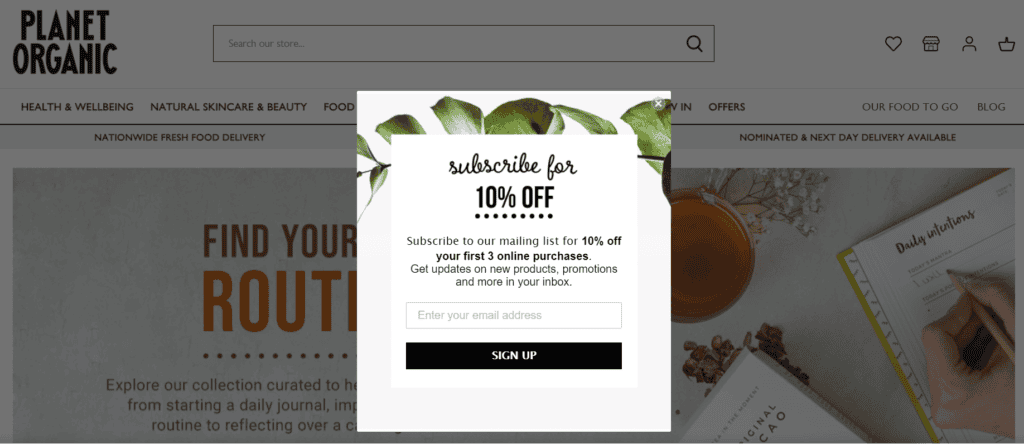
EngageBay offers an easy-to-use drag-and-drop online web form builder. However, if you would like to add contacts from sources other than CRM-connected signup forms, here’s how you do it with EngageBay.
Manually
Log in to EngageBay, go to the contacts tab on the top navigation bar, and click “contacts.”
Click “Create New,” and the “New Contact” form will open. The main details to add are the first name and email; you can add the remaining information when needed. You may even add a custom field if required.
Once you have completed all the necessary info, hit submit to create a new contact.
Using a CSV File
Prepare your sheet with well-defined headers associated with a field in the EngageBay contact form.
If you want to add any additional column headers, establish a custom field associated with them in EngageBay to correspond with them before the import process. Save the file as a CSV when you’ve correctly specified the sheet with all the necessary headers.
Go to “contact” under the contacts tab on the EngageBay dashboard. Click “Import” on the upper right corner of the screen.
After a pop-up window opens, you may choose the CSV file to upload and then hit the “Upload” button.
The system will show a page showing how the fields on your sheet match those in EngageBay. The fields are under “Column Heading” in your file or sheet. If you look at the “Field” column, the fields in EngageBay are shown there.
The “Columns with matches” show the fields that EngageBay could easily match with a field already in the system. You can leave it as is or change it to a field that works better in EngageBay.
“Column Without Matches” is where the field(s) were that EngageBay couldn’t match to an actual field in the system. You can ignore it, leave it out, or manually pick a field in EngageBay. When you’re done making changes, click “import.”
Now, you can see contacts from the .csv file.
3. Segment your subscribers
All your customers and website visitors are unique, and your newsletters must cater to their individual interests to succeed.
Lisa Richards, CEO and Creator at Candida Diet, says segmenting is crucial in meeting customers’ interests.
We’ve segmented our email list so that we can deliver content based on our subscribers’ interests. For example, we don’t just blast people with ‘tasty recipe ideas’ – we send recipes that are delicious and effective in the treatment of candida infections while also taking into account all different dietary preferences. This means that those new to anti-candida might receive a newsletter containing key beginner tips, while those further along in their journey might receive recipes and product recommendations for more advanced stages of the diet.
Customer segmentation helps to create an outstanding email marketing plan and get results. Customer segmentation aims to provide highly customized experiences by dividing the subscribers into subsets (or segments) defined by shared attributes.
You can segment your email subscribers by:
- Demographics – age, sex, location, income levels, birthdays, etc.
- User behavior- most purchased items, inactive users, re-engagement, etc.
Some email marketing tools, such as EngageBay, may offer in-built marketing segmentation features. To classify your consumers, use criteria like age, gender, demographics, and preferences, and even add custom fields to develop personalized content and launch hyper-targeted email campaigns. You can even set up time-sensitive customer segments to send timely emails for better open and click-through rates.
Here’s an example of a triggered time-sensitive email sent to VIP customers of Withings:
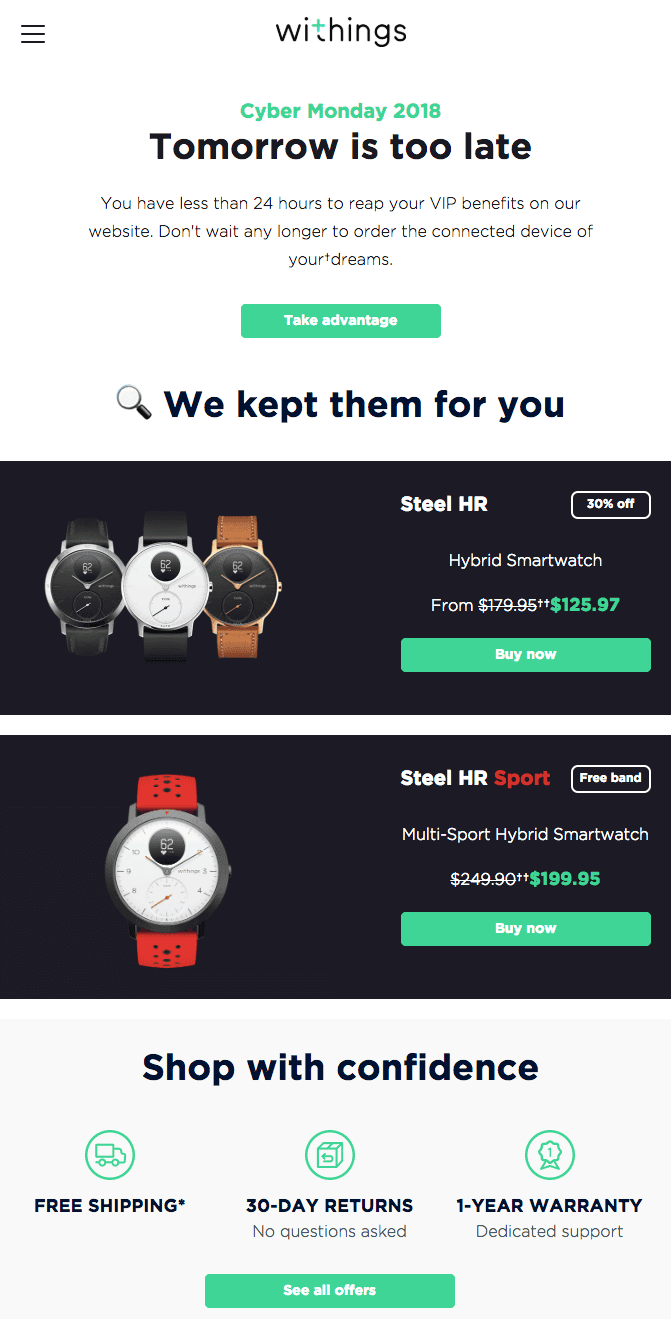
4. Craft your newsletter content
Delivering real value has to be the main goal of your newsletter, which is why creating high-quality content is the most essential part of our “How to create a newsletter” guide.
Your newsletters shouldn’t be all about promotional content. If it is, we can promise that your open and click-through rates will keep going down, and your unsubscribe rate will go up.
Sean Clough, President and Marketing Director of Harmony Lab & Safety Supplies, inserts the 80/20 rule when creating newsletter content.
While self-promotion is crucial and should be part of your email marketing approach, you are missing some important information if all you write about is yourself.
When in doubt, consider structuring your newsletter according to the 80/20 rule. This rule states that 80% of the material should be informative and helpful, and just 20% should be directly related to your company and the services it provides. You should be flexible with your approach and pay attention to whichever tactics connect with your readership the most. Some marketers will even advise using a 90/10 formula.
Provide valuable information as a standard requirement for your newsletter checklist. You can provide valuable information through:
- Educational content through blogs and how-to guides
- Updates and news
- Reminders for sales and discounts
- Gated content links to ebooks, tools and templates, training materials, etc.
Ensure you keep your newsletter’s content consistent with your brand voice to give consumers a consistent experience.
Now, let’s look at some important components of high-quality content in a newsletter.
Subject lines
An email subject line is the first piece of newsletter content your subscribers will see. Do not use clickbait subject lines at any cost, as they diminish the value of your content and the credibility of your brand.
Remember the purpose of the email while crafting the subject line. For instance, you can describe your current deals in the subject line of your promotional email using the fear of missing out (FOMO) technique, as Semrush did for this newsletter:
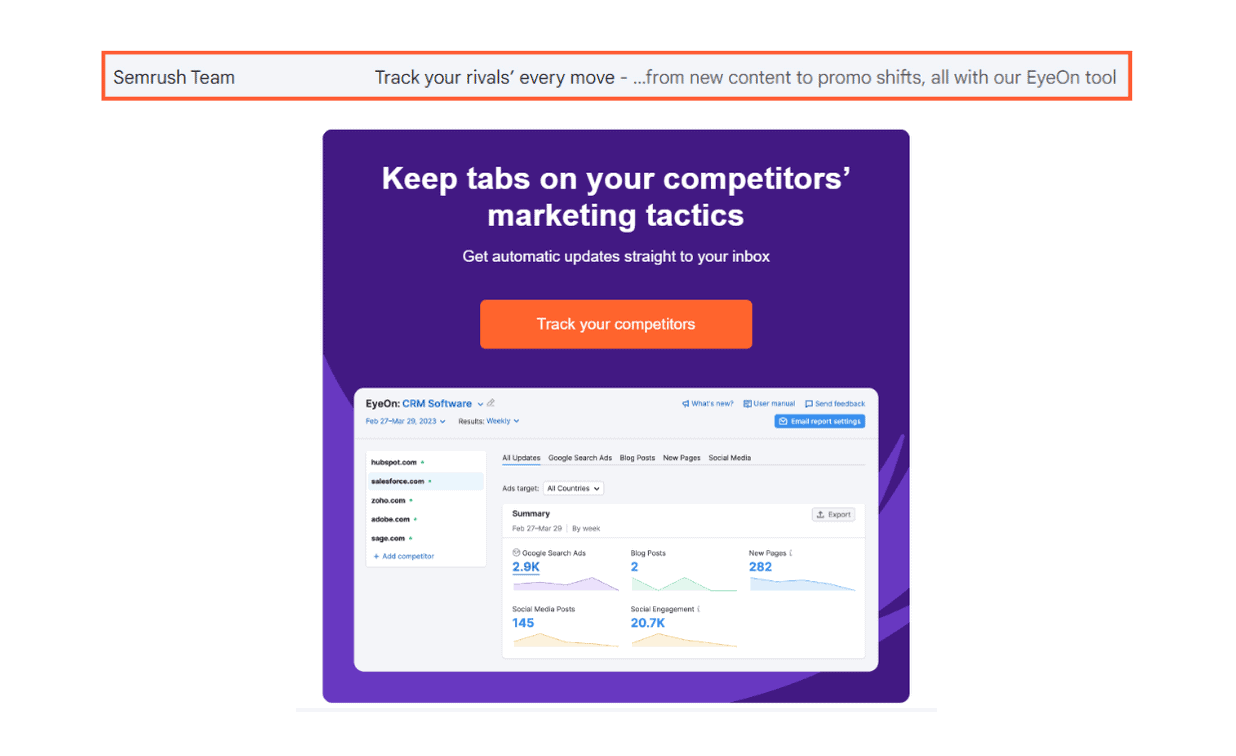
Preview text
The preview text is the second content component readers will see in their inbox after the subject line. You might include further details related to the subject line to encourage readers to open the newsletter. Don’t forget to keep it interesting, though!
Check out this example from Mutiny:
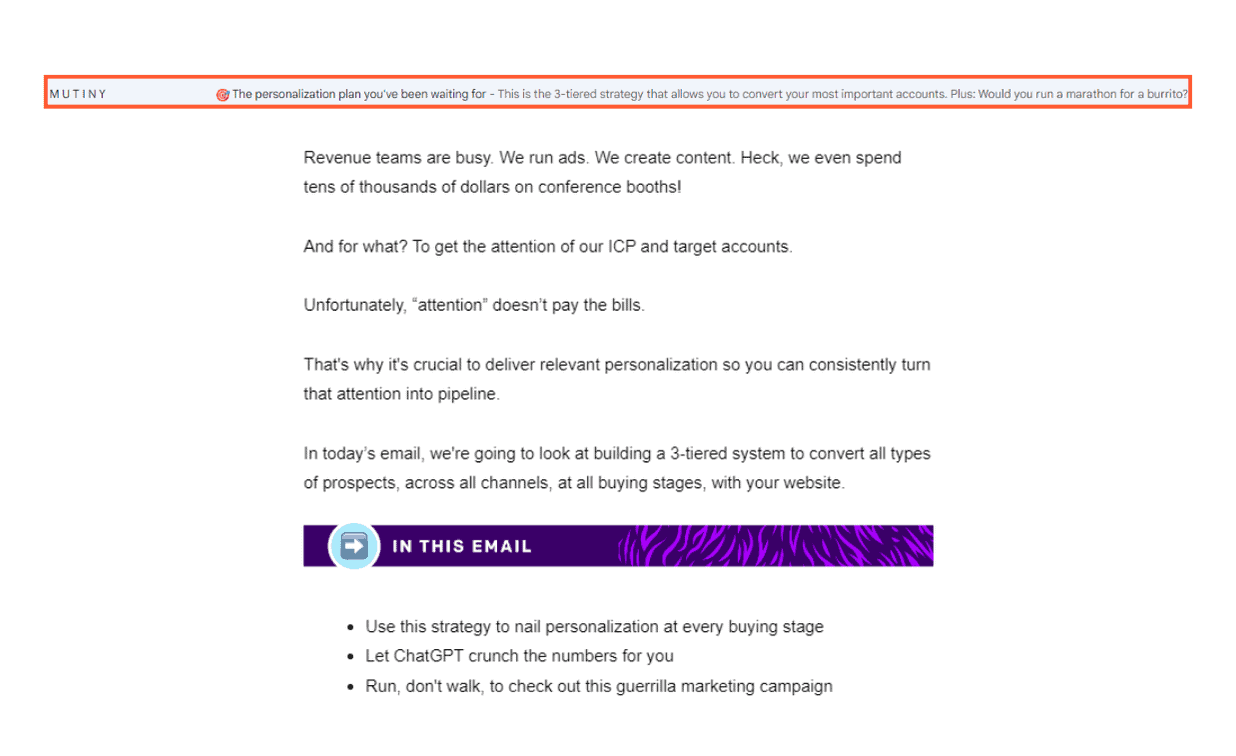
Email copy
To deliver value to your customers, borrow the inverted pyramid technique from journalism. Put your most valuable information at the top, followed by supporting data and additional information.
Why do this?
People these days don’t have good attention spans. To keep your newsletter subscribers engaged, put new product information, upgrade offers, and deals on the top. Get their undivided attention by satisfying their wants first. Once intrigued, the readers will most likely read the rest of your email afterward.
Check out this email content structure by CNN:

Their purpose is to deliver “5 things” that one must know. So, those five things are at the top, followed by ads and additional reads.
Remember, though, nothing you write should ever detract from the purpose of the email. Make sure your CTAs are clear and concise. Increase conversions with engaging and persuasive language!
Read also: Creative Newsletter Name Ideas and Examples for Small Businesses
5. Add personalization
If you narrow down some usual strategies successful newsletters use, email personalization will always be common because 90% of marketers vouch for personalization.
Research shows that 80% of customers prefer to conduct business with a firm that provides a personalized customer experience. Why? Because your subscribers feel like you care about them and their needs when you use them to send them personalized emails by addressing their names and containing content relevant to their interests.
Alister Wood, Founder of VisitUs, and his team analyze their data to personalize customer content.
Creating effective newsletters requires a clear strategy and goal alignment. While teams often add content they find important, it’s crucial to base these choices on customer behavior. That’s why teams must analyze their analytics data to gauge customers’ interest. We look at products that customers viewed but not purchased, pages visited but not engaged with, and posts driving the most traffic. This informed approach ensures content is relevant and drives sales.
Other than using the reader’s name, you can personalize content with other customer demographic data, such as location or job title.
OR
You may also leverage user behavior data, such as last purchase, browsing history, etc.
Here’s an excellent example of email personalization by David’s Tea:
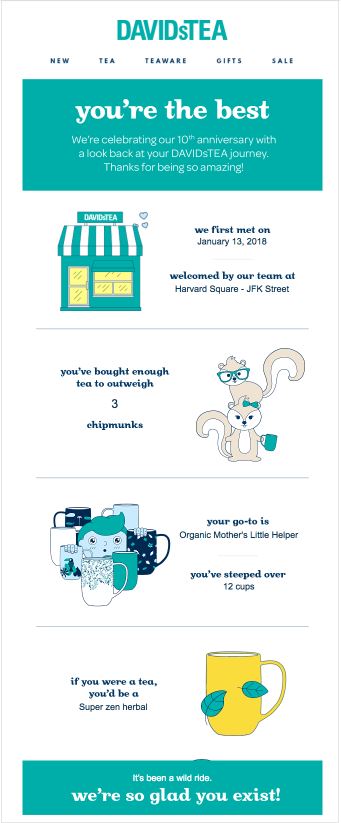
You don’t need to personalize each email by name or write a newsletter to each individual to cater to their interests. Leverage email marketing automation features of your email marketing tools and get the basic personalization, like adding their names, automated.
You can also use your audience segmentation to deliver the right newsletters with topics pertinent to specific groups.
Read also: Effective Newsletter Email Templates for Small Businesses in 2024
6. Nail your newsletter design
Designing a newsletter is the fun part of our “How to Create a Newsletter” guide.
You are free to be imaginative with your newsletter design, but here are some common components you’ll normally include in a newsletter:
- A company logo is at the top to get the reader’s attention and reinforce your brand identity.
- Proper content organization uses relevant subheadings, adequate spacing, and prominent CTA buttons, allowing readers to concentrate easily on the important points.
- Visuals that are both attractive and of high-quality help get your point across more quickly.
- Links to your social media accounts to connect on different platforms.
- Contact and subscription information.
- Responsive design to deliver a seamless user experience on mobile devices.
Working with a newsletter template can help you design a newsletter more easily than from scratch. It makes the entire design process a breeze with this ready-to-use framework. You just need to customize the layout and place your newsletter’s content.
A good email template will save you a lot of time with pre-built slots with customization options for:
- Your logo
- Brand colours
- Images or other multimedia elements
- Written content
And more.
However, you want to ensure that your company newsletter aesthetics match the creatives on other communication channels, such as social media platforms. You may modify an existing template to fit your requirements once you’ve selected a suitable one by:
- Altering the background color, font style/size, and other design elements
- Add or remove text and images of different sizes
A drag-and-drop editor, such as one provided by EngageBay, allows you to create a newsletter with just a few clicks. To develop consistent content, you can import your brand kit with standard fonts, color palettes, and other interactive components. By making minor adjustments to the template design, you can make your newsletter uniquely yours, reflecting your brand and setting you apart from competitors.
Using email templates to create your newsletter lets you maintain a consistent look in your weekly or monthly emails.
For example, check out how Elf Cosmetics customizes the same email template for different email marketing campaigns:
Example 1 Example 2
Example 2
For your resources —
- EngageBay: Browse 1,000+ HTML email templates for your email purpose, season, or industry for free. Start creating stunning newsletters with EngageBay today!
- Hubspot: Check out interactive email templates in the Hubspot library that promise a sure shot to drive engagement in your email marketing campaigns.
- Drip: Access more than 50 eCommerce templates that you can easily customize for your newsletter to suit your brand needs.
- BEE: Accelerate your strategy for email marketing with 1,200+ free email templates for different events, seasons, and industries.
- Mailchimp: Sign up for high engagement with your newsletters using 100+ expertly-designed templates.
Read also: How to Craft Email Newsletters That Captivate Your Audience
7. Send your newsletter
We’re about to end our how-to-create newsletter guide, and it all comes down to — sending the newsletter out at the right time! Time is the essence of successful email marketing campaigns.
Shannan Seely, Founder of Seely Marketing Communications, advises sticking to a specific day/schedule for rolling out a newsletter.
Commit to how often you publish your newsletter and stick with it. So, if we send out a newsletter every month, we stick to a schedule of specific days we’ll email to our list. Be consistent. Showing up in their inbox is like showing up for an appointment with your reader. You never want to “ghost” them.
With EngageBay Email Broadcast, you can plan ahead and send newsletters to specific segments at certain times. According to the timetable, the system will automatically send the queued emails.
Here’s how to schedule your newsletters:
- Add all the content and details, such as the subject line, recipients’ names or lists, and other data.
- Under the confirmation tab, click on “Proceed to Send/Schedule.” You will be taken to a different page.
- Click “Schedule Later” and indicate the time and date for sending the newsletter.
- Click “Schedule,” and then you’re done!
In addition to sending newsletters via email, you can distribute them on social media channels like Facebook and LinkedIn. Regularly promote your newsletter content to encourage people to sign up.
P.S. Don’t forget to add a clear CTA, such as “subscribe now” with a link to the sign-up page for your newsletter.
Read more: The best time to send an email (and the worst)
8. Keep an eye on the metrics
You’re done creating a newsletter. But we’re not done! We still need to see how well you’ve done! This is the last and probably an important step of how to create a newsletter (successfully) 😛
Milo Cruz, Content & SEO Lead of BuddyCRM, says his team spends quality time analyzing the metrics as it plays a huge role in determining the result.
After each newsletter, we spend some time analyzing the metrics. Note which topics, formats, or CTAs performed best, and brainstorm how to incorporate those successful elements into future editions. My advice is to not be discouraged by less-than-perfect results. Instead, see them as opportunities to refine your approach. Remember, the goal is consistent progress, not perfection.
Key metrics or key performance indicators (KPI) of your newsletter will illustrate the performance of your email marketing strategy. Tracking these email marketing KPIs helps you understand whether your newsletters contribute to the overall marketing strategy and convert subscribers into paying customers.
Here are some crucial email campaign metrics to keep an eye on:
- Open rate: Your email open rates show the number of recipients who open your email newsletter. A 50% open rate would result from 100 contacts receiving your email, with 50 people opening it.
- Click-through rate (CTR): The CTR value tells how many people clicked on a link in your newsletter after opening it. For example, a 50% CTR means that 25 of the 50 who opened an email clicked on a link.
- Unsubscribe rate: You can see the percentage of your newsletter campaign recipients who clicked on unsubscribe to stop receiving emails from you. Your unsubscribe rate is 5% if five of every 100 recipients of your newsletter campaign choose not to receive it again.
- Delivery Rate: The number of emails that make it to your recipient’s inbox is the delivery rate. If 99 of 100 email recipients actually get your email campaign delivered, then your delivery rate is 99%.
- Bounce rate: The bounce rate is the number of emails sent but never received because they were sent back (bounce) by the recipient’s email service provider. If 5 of 1,000 emails fail, the bounce rate will be 0.5%. There are two types of bounces:
- Soft bounces: The email doesn’t get to the receiver immediately because the server of their email service provider is down or their inbox is full.
- Hard bounces: The email is never going through because the email address you provided is wrong or has ceased to exist.
- Marked as spam: This is the number of people who complain about your emails as fraud by marking them as spam.
Tracking your key performance indicators is essential to a successful email newsletter strategy. It can help you in the process of creating a newsletter in the future with more clarity on:
- Technical difficulties with the email campaigns
- The right type of content and design elements your email clients enjoy (and take action with) the most
- The right time to send the newsletters you create
- The number of emails to send in a given period
KPIs tell you what works and what doesn’t. It refines your entire “how to create a newsletter” process and fine-tunes your email newsletter strategy to meet your business goals.
How To Create a Newsletter for Free?
Don’t have an extensive budget to start creating your newsletters? Usually, a small business doesn’t. We have a few tips for you.
- Sign up for free email marketing tools that provide necessary features, such as contact management, a drag-and-drop editor, segmentation and personalization, email scheduling, automation, and more.
- Build your contact list using your existing personal and professional network. Promote your newsletter by posting it on social media.
- Repurpose your existing content, such as blogs and social media updates, to create new content without spending a buck. You can also leverage user-generated content by collecting reviews and testimonials.
- Use free and easy-to-use design tools like Canva to design your company newsletters. Several platforms even offer free newsletter templates.
- Ensure compliance with email regulations to avoid hefty fines and penalties for your business. This one’s important, so let’s get more into this in a bit.
For your resources – Free tools and services
- EngageBay: Sign up for a free comprehensive CRM for all your marketing needs. It includes all essential email marketing features, such as 250 contact management, email broadcast, drag-and-drop edition, automation, and much more.
- Zoho: Send 5,000 free monthly emails to up to 1,000 subscribers. You’ll also access features like dynamic personalization, interactive elements, A/B testing, and more.
- Omnisend: Use this platform for various customer communications, such as popups, newsletters, SMS, and web push notifications. Sign up for free today!
- Brevo: Brilliant email marketing platform with a free CRM and a daily email sending limit of 300 emails. Manage up to 100,000 subscribers and get access to pro automation tools.
- Mailjet: Send 6,000 emails a month and manage 1,500 subscribers for free. Sign up for a free Mailjet account, and you can access basic reporting and an advanced email editor.
Keeping Your Newsletter Compliant
While email marketing offers small businesses a direct channel to communicate with their target audience, it must be done responsibly. There are various email laws depending on your subscribers’ location to protect their data and privacy. Consider these common regulations while strategizing email marketing.
- The Controlling the Assault of Non-Solicited Pornography And Marketing (CAN-SPAM Act): Your emails must allow subscribers to avoid receiving email communication and give clear sender identification. You may remain compliant with this law by simply adding your address and an option to unsubscribe in the footer.
- The General Data Protection Regulation (GDPR): In addition to the option to opt out, you must also get the subscribers’ consent to collect their data. Use a double opt-in verification for newsletter sign-up and keep your audience informed about how their data will be used to personalize communications.
- Canada’s Anti-Spam Legislation (CASL): CASL mandates receivers’ explicit agreement before delivering commercial electronic communications (CEMs), clear identity and complete contact information, an unsubscribe option, and transparency in your subject line. Therefore, besides the above laws, you must avoid using clickbait subject lines.
Staying on top of email compliance requirements ensures your messages aren’t in the spam folder. However, that may be your least concern. Offenders may also face severe penalties, resulting in monetary loss and ruining your brand identity.
Your marketing emails will be more successful and appreciated by your subscribers if you build them on consent-based marketing. In addition to meeting these legal requirements, you must foster a robust culture of consent by putting transparency and high-quality content at the core of the newsletter strategy.
A Newsletter That I Loved Reading …
Most newsletter subscribers care for newsletters that deliver value. Yes, aesthetics matter, but not more than content. And if you want to see high-quality content, turn to Mad Over Marketing newsletters!
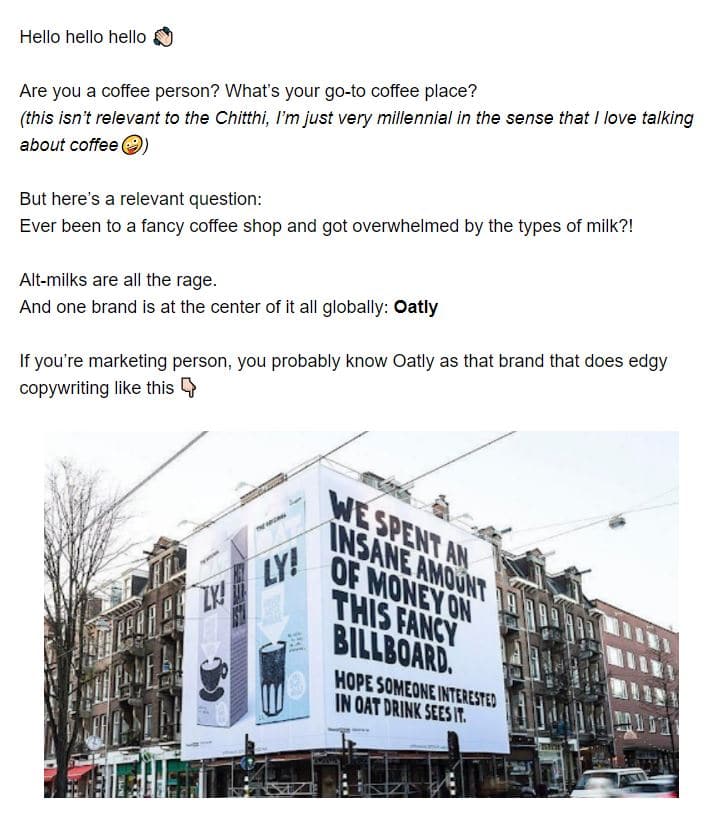
What I love: Just look at how engaging the newsletter is despite quite a simplistic design! What makes it engaging? Other than the brilliant insight they’ve given into Oatly’s marketing tactics, I love the newsletter’s style of writing and structure.
The newsletter copy starts with an attention-grabbing hook that gets all coffee people in the conversion. It then gets right into its topic.
The entire copy flows like a conversation.
It’s as if Sid (the author) is literally narrating it and showing us around the newsletter. The perfect spacing, lack of long paragraphs, and appropriate headers make the newsletter VERY READABLE. And to top it off, there are some nice visual breaks with relevant images and GIFs.
Lastly, notice how there’s nothing promotional about the newsletter until the very end of the copy. The goal of this newsletter is clear: deliver real value through insights into a brand.
While they don’t have a traditional design, they stick to the newsletter structure:
- The newsletter’s subject first
- Promotional stuff after
- Social media links at the end
- Followed by identifying the sender and
- Lastly, the option to change subscription preferences and unsubscribe
Fun stuff, right?
Conclusion
There you have it: a comprehensive guide on how to create a newsletter from start to finish! But remember, this article is just a start. Once you create your first newsletter, you’ve got to aim for continuous improvement. Measuring the performance of your newsletter will open a chest of insights.
Start your journey of creating your newsletter with EngageBay today! Take advantage of countless free email templates, easy-to-use drag-and-drop editor, advanced segmentation and personalization, email automation features, and so much more. Sign up for free and take advantage of our comprehensive marketing platform.
More Resources
- How To Create Great Email Newsletters In 2024 [With 7 Free Templates]
- Summer Newsletter Ideas: How To Keep Your Subscribers Cool
- 20 Outstanding October Newsletter Ideas For This Fall
- 21 November Newsletter Ideas To Keep Your Subscribers Cozy
- 7 Winter Newsletter Ideas To Cozy Up To Your Subscribers
- 5 Spring Newsletter Ideas To Light Up Your Marketing Campaigns
- 21 Email Newsletter Software: What’s Hot In 2024?
- 10 Engaging Newsletter Ideas For Freelancers And Solopreneurs
- 15 Of The Best Newsletter Examples For Creative Inspiration
- 55 Exemplary Newsletter Subject Lines To Boost Email Open Rates
FAQ
1. How do I create my own newsletter?
Creating a newsletter is not rocket science as long as you’ve figured out your business goals and gained a deep understanding of your target audience. To create a newsletter, follow these eight steps:
- Choosing your email marketing platform
- Getting and adding contacts
- Segmenting your subscribers’ list
- Crafting your newsletter content
- Adding personalization
- Designing your newsletter
- Sending your newsletter out
- Tracking campaign metrics
2. What is the format of a newsletter?
You can change the design of your newsletter as you wish. However, here’s what a newsletter format looks like:
- The logo of the company at the top
- Banner introducing the topic or main headline of the newsletter
- Relevant headers followed by content and visuals
- Social media links in the footer with contact and unsubscribe option
3. How do I write my first newsletter?
To write your first newsletter, use a free email newsletter template and an email marketing platform with a drag-and-drop editor. Add your brand colors, fonts, and other branding elements to change the newsletter layout. Add content by replacing text and images, and voila! It’s that simple!
4. How to create a newsletter for free?
If you don’t have a budget to invest in creating a newsletter, you can rely on free email marketing tools, such as EngageBay. You can also create stunning designs using beginner-friendly free design tools like Canva and repurpose existing content from your blogs, articles, and social media or use user-generated content.
